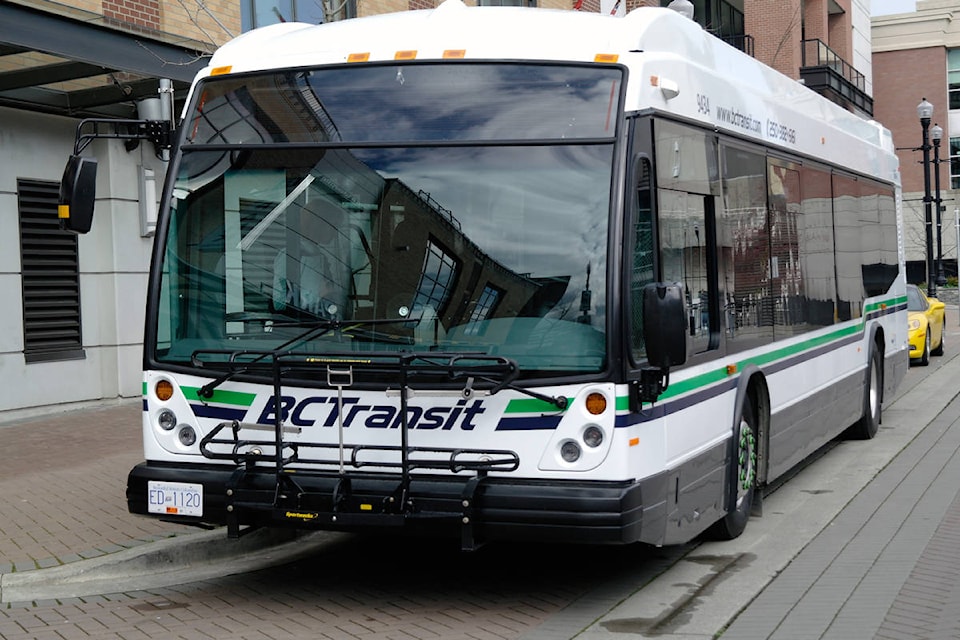With bus ridership decreasing due to COVID-19, Regional District of Nanaimo Transit is projecting a $2.1-million loss, according to a report.
After pandemic restrictions were implemented in mid-March, RDN Transit reduced service, enhanced cleaning, introduced rear-entrance boarding for safe distancing and temporarily waived bus fares in order to limit interaction with drivers. According to an RDN transit select committee report, there was an overall 60-per cent drop in ridership between mid-March and June, and even in the midst of the province’s restart plan, signs point to a “slow recovery.”
Prior to pandemic response, about 10,000 riders were boarding RDN Transit buses daily, but after COVID-19 protocols, that dropped to an average of 4,000 a day, the report said.
Route 40 (VIU Express), which sees the highest ridership in the region, accounted for 47 per cent of transit system ridership between January and March due largely to Vancouver Island University students, with an average ridership of more than 4,000 on weekdays, stated the report. VIU suspended classroom instruction in March and ridership dropped by 75 per cent to about 1,700.
Route 30, which services Nanaimo Regional General Hospital and sees the second highest ridership, saw more than 1,200 riders daily prior to the pandemic, but that dropped to 570.
With Departure Bay ferry terminal closing due to COVID-19, an interim bus route from the downtown Nanaimo to Duke Point ferry terminal was instituted from April 15-June 3 with three daily trips, Monday through Saturday. According to the report, the route “became steadily more successful in its short duration.” Ridership rose “week-over-week” from an average of nine rides per day to 24 per day in its last week of operation. On average, 14 riders per day took advantage of the route, the report said.
Fares were re-introduced June 1 and bus capacity was increased to 50 per cent and since that time there has been a slight increase in average weekday ridership, said Erica Beauchamp, RDN superintendent of transit planning and scheduling.
“We’ve been seeing a very gradual increase over the last few weeks, since maybe about [the middle of May],” she said, adding that her most recent data from the last week of June showed just over 5,000 rides per day.
RELATED: RDN charts course for COVID-19 recovery
With VIU stating it will offer learning with a significant online education component in the fall and plans from Nanaimo-Ladysmith school district forthcoming, the RDN estimates fall ridership will be 50 per cent or lower when compared to other fall semesters.
With losses estimated at $2.1 million, according to the report, there is a possibility that it could be “offset” using reserve money for northern and southern conventional transit accounts. This could affect transit exchange upgrade projects, such as ones at Woodgrove and Country Club centres.
RELATED: VIU plans for hybrid education for fall semester
RELATED: RDN won’t charge bus fare amid pandemic
RELATED: RDN Transit offering temporary buses to Duke Point
reporter@nanaimobulletin.com
Like us on Facebook and follow Karl on Twitter and Instagram
